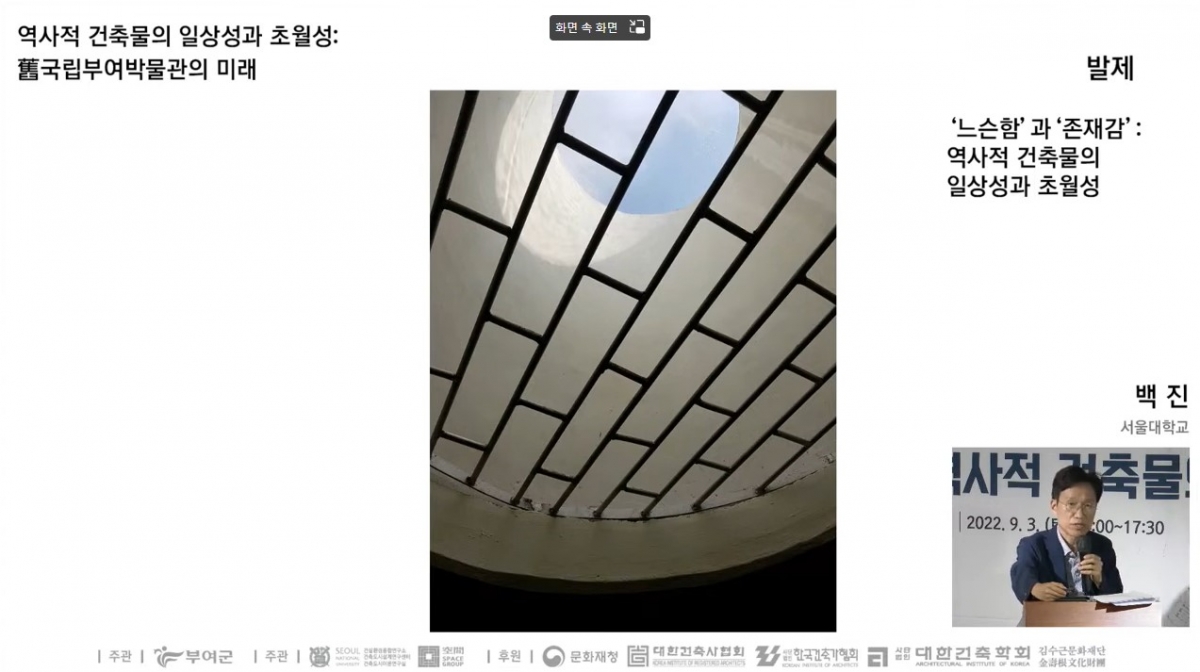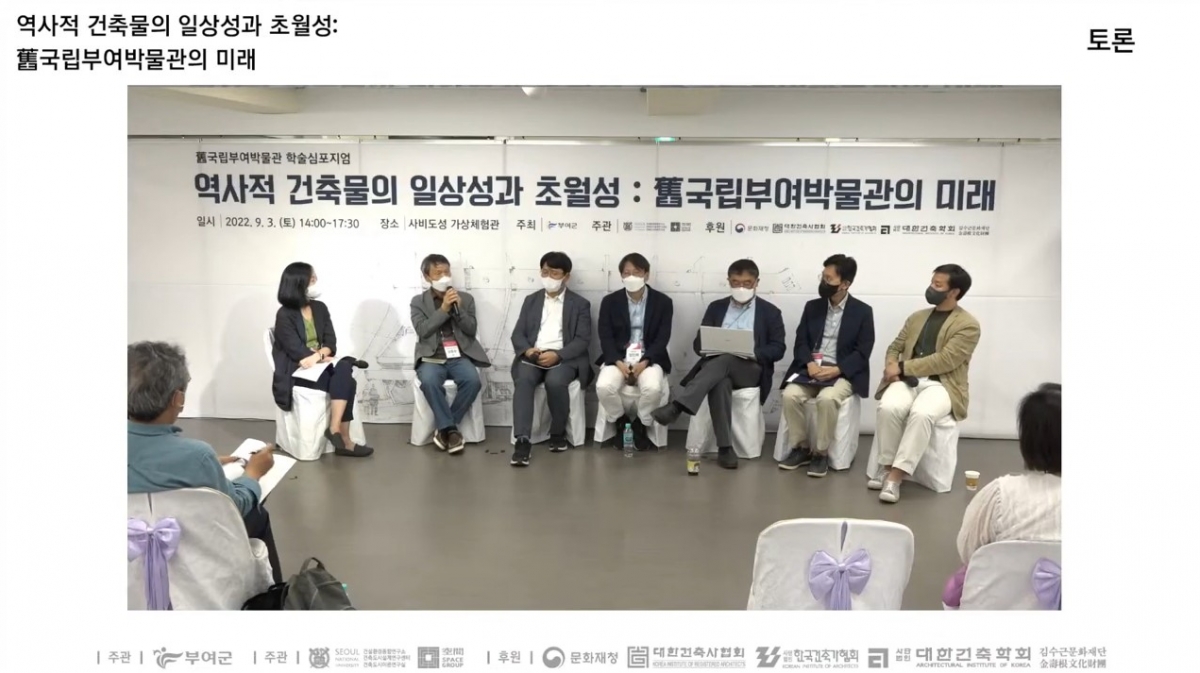An academic symposium, ‘The Quotidian and Transcendental Nature of Historical Architecture: The Future of the Old Buyeo National Museum’, hosted by Buyeo-gun, Chungcheongnam-do, was held on Sep. 3. The venue was the Sabidoseong Virtual Experience Center (Buso Gallery). and the event was broadcast live on YouTube in its entirety. The symposium offers the first opportunity to review the controversy surrounding the museum’s Japanese style at the time of its establishment in the late 1960s and was prepared to redefine the historical value of the building. The old Buyeo National Museum was used as the Buyeo National Research Institute of Cultural Heritage when a new museum building was built. Now it has become the Sabidoseong Virtual Experience Center.The symposium consisted of presentations on five themes, special sessions, and opportunities for discussion.
Kim Youngjae (professor, Korea National University of Cultural Heritage) observed the changes to the landscape of the museum area from the Joseon Dynasty and the Japanese colonial period to the present, and suggested the possibility that the original, the volatilised, and the changing had been mixed to form a Japanese style. Following this, Jung Inha (professor, Hanyang University) pointed out the double standard of Kim Chung-up’s Samilro Building, which imitates the Seagram Building in New York. However, Kim Swoo Geun’s old Buyeo National Museum was a particular focus of criticism. But he also understood it not to be an unfounded controversy, given that it was similar to the Japanese architect Tange Kenzo’s plan for the WHO headquarters. Ahn Changmo (professor, Kyonggi University) introduced the controversy and the way it resulted from a certain antipathy towards the Japanese and the government’s use of tradition as a political tool. Lastly Baek Jin (professor, Seoul National University) paid attention to contrasting spatial elements such as high and low, light and dark of the ceiling designed to accommodate various possibilities because there was no programme at the time of the museum’s creation. He argued that as this is the source of the vitality of the old museum, which has been the subject of transformation for over half a century, its value should be recognised and preserved. Furthermore, he concluded in their presentation that we need to break away from the discourse on the Japanese style and discuss new uses as a mirror capable of reflecting our past and future. In the special session, Lee Choonghun (team leader, SPACE Group) pointed out that the concentration on museum preservation has led to a lack of space for people to remain in such spaces. Therefore, he suggested using the closed storage or adjusting the location of the stairs to secure more space for use as a local library. The final discussion was hosted by Han Eunhwa (journalist, JoongAng Ilbo) in which the gathered presenters and members of the public attending the symposium participated. They pointed out that the identity of the old Buyeo National Museum was rendered ambiguous when the museum moved to the new building in 1993. Therefore, there was a consensus that a clearer purpose should be alighted upon through improved communication with the public.

Screenshots from Youtube

Screenshots from Youtube




